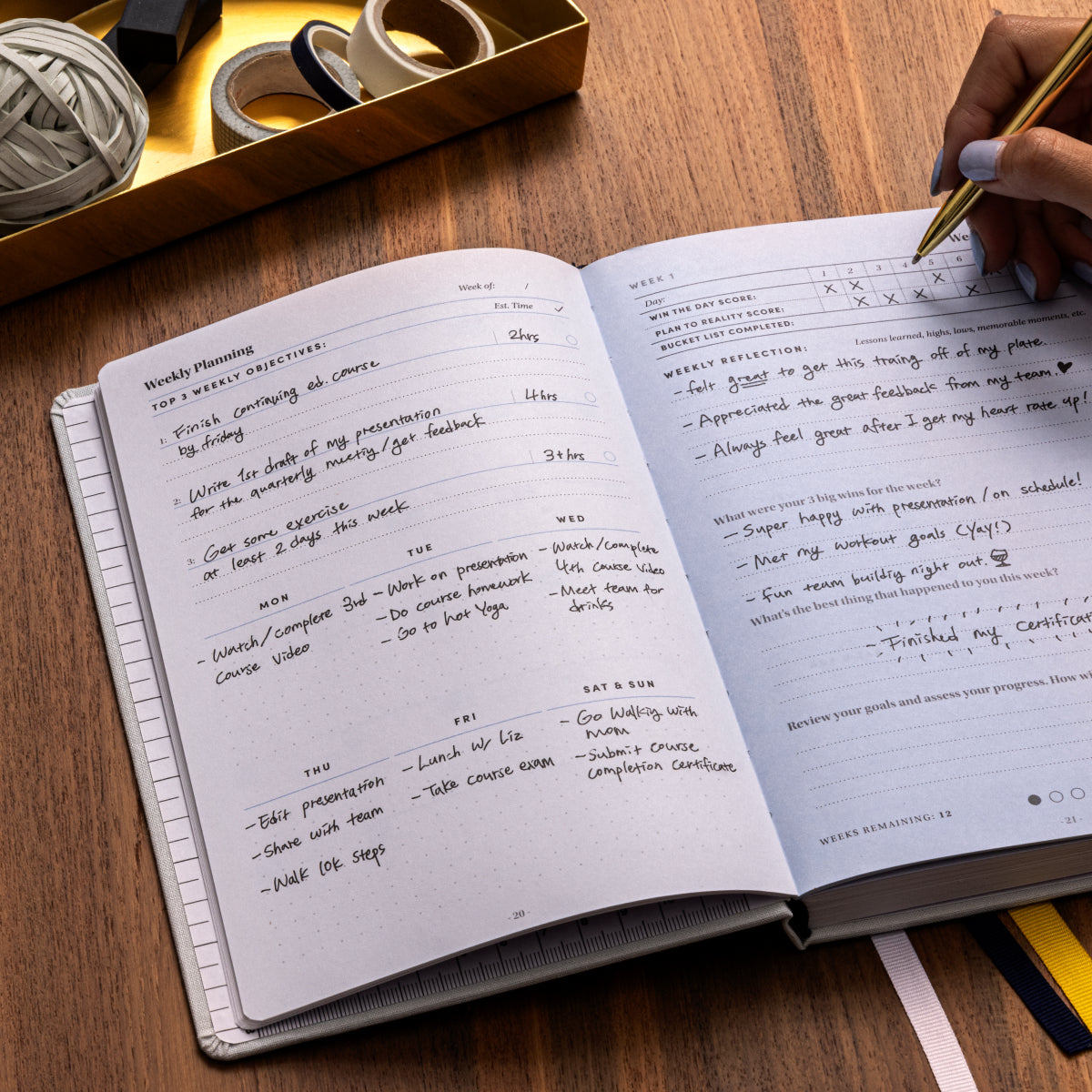As an entrepreneur, does the following scenario sound familiar?
You start the day bright and early, coffee in hand and a list of tasks spread out before you. You’re feeling unstoppable, ready to crush your to-do list. But then, the phone rings. It’s a client, asking if they can add a few new things to the project you agreed upon. That call runs for an hour, and by then it’s already 10 am, practically lunch, so there’s no harm in taking a few minutes to read your favorite productivity blog (because, hey, if you’re reading about productivity it’s not procrastinating, right?).
Lunch comes and goes, and then you decide to check your email just to make sure you haven’t missed any important messages. You then look up a couple hours later, realize it’s already 4 pm, and you haven’t even started work on the client project you promised you’d deliver tomorrow.
You spend the next few hours hammering that out, and by then it’s already time for bed. You glance at your to-do list, realize you barely accomplished your most important tasks --, and hope that tomorrow will be better.
If this sounds like you, then you need to take control of your days. You need a tool that will help you not just stay on top of your current tasks, but also help you make the strategic changes necessary to propel your business forward. You need a productivity planner.
What Is a Productivity Planner?
For our purposes, a productivity planner is a physical notebook that you use to set, track, and review your goals and habits. Productivity planners often exist to help you implement a particular productivity system, but they can also be a simple as a notebook with a blank calendar.
Usually, however, they aim to provide a bit more direction, and they’re also designed to help you with goal setting and habit change (as opposed to a normal daily calendar, which helps you keep track of events, meetings, and other commitments).
Why Use a Productivity Planner?
Why should you bother using a productivity planner at all? Can’t you accomplish the same goals with just a digital calendar and to-do list software? You can get the same results without a productivity planner, in theory. But in practice, a calendar and a to-do program alone may lead you to focus only on keeping up with your current commitments and maintaining the status quo, while missing the bigger picture. You may be surviving, but you’re not progressing.
A productivity planner, in contrast, exists to help you make progress by breaking down ambitious goals into smaller, more manageable steps, as well as building new habits that push you out of your comfort zone. A productivity planner combines a calendar with daily pages, checklists, and other aspects of time management tools to help you reach a place of unprecedented momentum and productivity that you never thought possible.
If you want to be productive, move forward in your business, and make big things happen, then you need a tool that does more than just help keep you in the same spot. You need a planner that will help you perform the time management necessary to reach new heights.
But how do you use a productivity planner? How do you prevent it from becoming just another dusty book on your shelf that you bought and never opened?
How to Use a Productivity Planner
Successful people understand that the best productivity planner (or system) is the one you use. So don’t obsess over the choice; here is no “best” productivity planner. There are many good options, some of which will work better for you than others.
It’s a mistake to think that the right productivity problem will solve all your problems without any effort on your part. The planner exists to guide you and keep you accountable, but it can’t replace the time you need to spend doing the work.
The best productivity planners give you just enough help to get more done without getting in your way or becoming a chore to use. If using your productivity planner becomes just another difficult, unpleasant task on your to-do list, then you’re not going to use it, defeating the point of getting one to begin with.
Here are our tips for getting the most out of whatever productivity planner you choose:
1. Commit to the System
Once you’ve picked a productivity planner, stick with it. It’s easy to give up on a system after a couple days because you’re not seeing immediate results, but you need to give it time. Productivity is a habit, and habits aren’t something you can build overnight (or even in a couple weeks). If you spend time transitioning to a new productivity planner every time you run into trouble with your current one, then you’re distracting yourself from the ultimate productivity goals.
We suggest that you stick with a productivity planner for at least a month before considering a new one, and ideally even longer. This will ensure that you’re judging the quality of the system objectively, instead of just letting frustration or boredom direct your decisions.
2. Use It Daily
Committing to the system is a high-level goal that won’t succeed unless you use the productivity planner every day. How much you’re required to do each day will depend on the productivity planner you choose (some let you do less on the weekends, for example).
But you should accomplish something in your planner each day, even if it’s just making some notes or sketches of ideas. This is how you get into the habit of using your planner, ensuring that it will be worth the money you paid for it.
3. Review Regularly
The only way to tell if you’re accomplishing your goals (and to evaluate the effectiveness of your system) is to perform regular reviews. Most productivity planners will have space for you to stop and perform weekly, monthly, quarterly, or even yearly assessments of what you wanted to achieve, what you did achieve, and how you can close the gap between the two with your future actions.
As Socrates famously said, “The unexamined life is not worth living”. Regular reviews of your productivity planner will help you make sure that you are examining your life, that you are continuing to make progress.
4. Plan at Different Levels
The best planners help you focus on what you can most directly control (today) while also helping you set ambitious, yet realistic, goals for the future. Specifically, your productivity planner will help you plan (and review) at daily, weekly, and monthly levels.
Let’s look at each of these levels in more detail:
- Daily - Daily planning makes sure you're reaching the daily productivity that will adds up to help you achieve your bigger goals. Planning each day (ideally the night before) helps you work with greater purpose and achieve your important daily tasks (while resisting unimportant distractions).
- Weekly - Weekly planning helps you figure out how to break up larger projects or tasks over the course of the week, as well as how you’ll fit in your work sessions amid other commitments such as meetings, calls, and business admin tasks. This level also includes a weekly review where you examine what went well with the week and how you can improve in the future.
- Monthly - Monthly productivity planning takes things an additional step up, looking at how your larger projects fit into your overall business and personal development goals, as well as considering how commitments such as travel or the start of new projects will dictate what you focus on in a particular week.
Beyond each of these levels, you can also plan in quarterly or annual increments. However, these are such large increments (and so much can change within them) that we recommend you worry about them less than you do daily, weekly, and monthly planning. By keeping your scope a bit closer, you can make sure that your goals remain realistic and your good habits are accumulating.

Don’t Just Set Goals, Achieve Them
We hope you now see how powerful a productivity planner can be in helping you accomplish your goals and build powerful habits. The right planner will keep you on track at all levels, help you reflect and evaluate your progress, and ultimately lead to a life where you’re exceeding the status quo, not just maintaining it.
If you’re looking for a productivity planner to help you accomplish these goals, then we recommend the Self Journal. It’s a powerful yet simple daily planner to help you structure your day, enjoy life, and reach your goals quicker than you thought possible.








Leave a comment
This site is protected by reCAPTCHA and the Google Privacy Policy and Terms of Service apply.